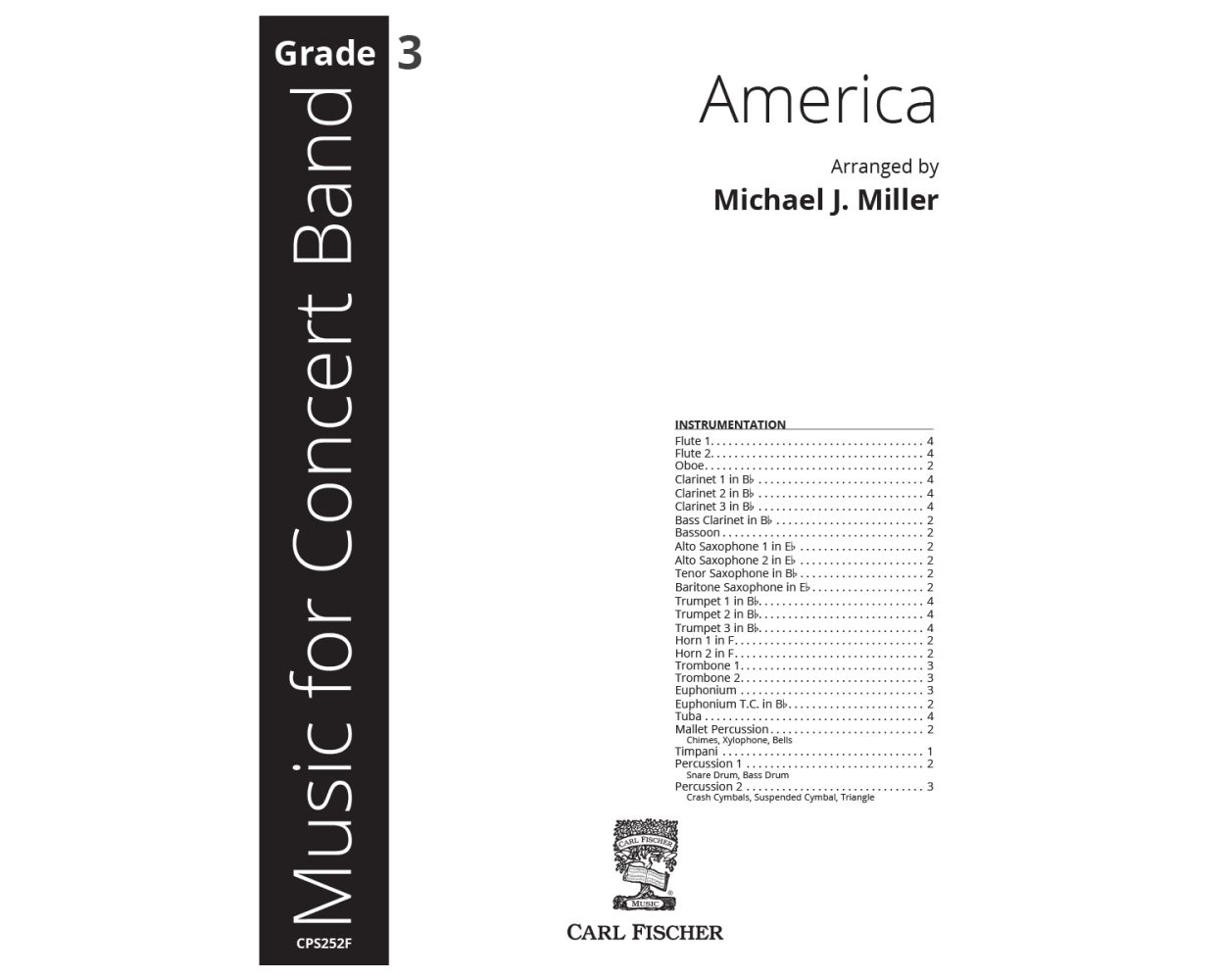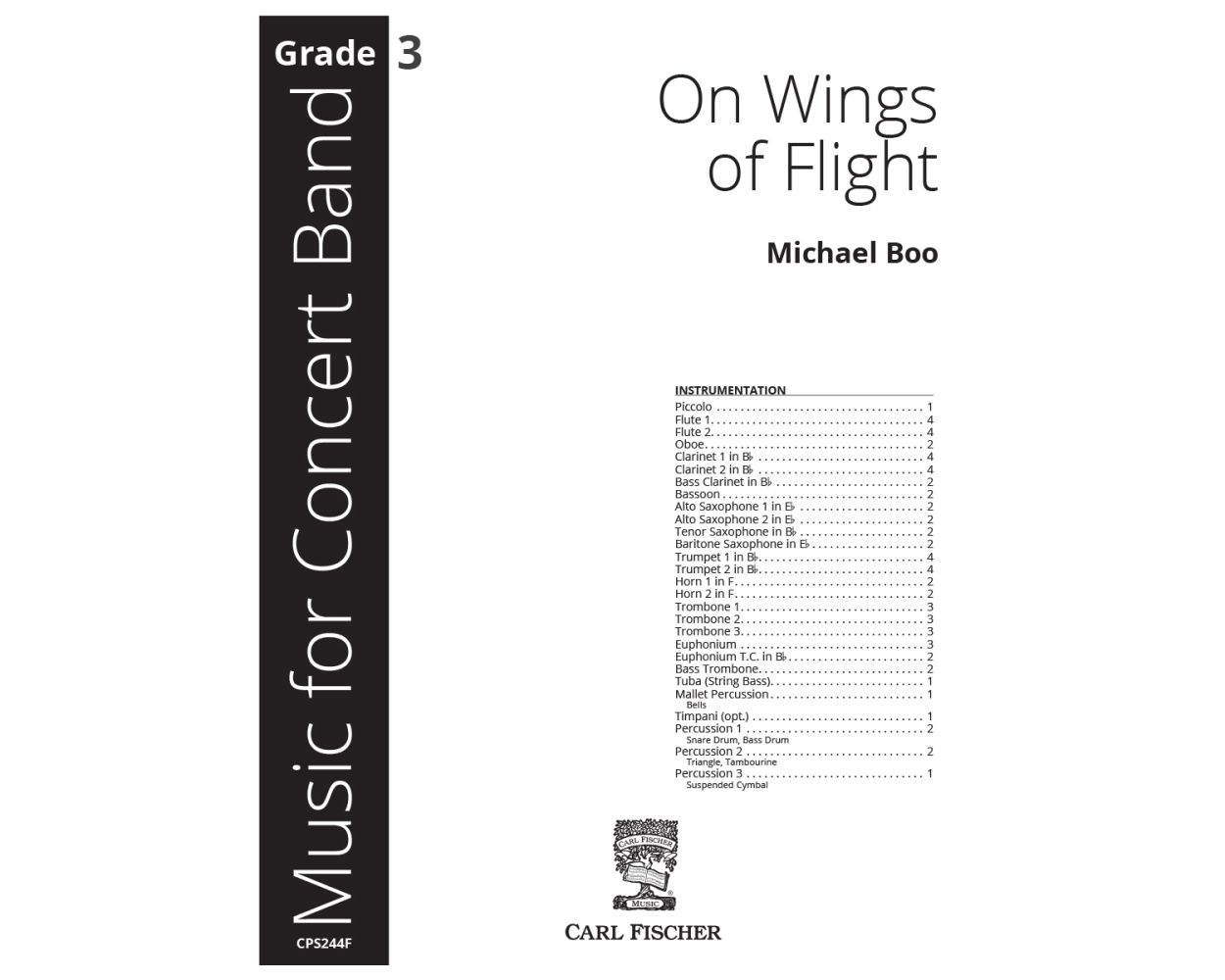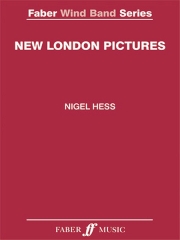Results
-
£105.00
New London Pictures (Score & Parts) - Nigel Hess
New London Pictures represents elements of London in the 21st Century. The Millennium Bridge describes the pedestrian's journey across this wonderful new landmark bridge over the Thames, starting at the imposing Tate Modern, crossing the busy river, and onwards to St. Paul's Cathedral with its bells ringing out over the great city. London Eye is an incredibly large ferris wheel situated on the South Bank of the River Thames. This movement depicts a "flight" on this riverside wheel, at the top of which the anoramic view of London is breath-taking and the exapnse of the music is a suitable depiction of the view. As with all modern cities, London is over-crowded with motor vehicles. London is the first major city in Europe to adopt a Congestion Charge, and this piece (with its stop and go traffic lights) is both racy and comical. Here are Londoners attempting to go about their business in the face of overwhelming odds.....
In stock: Estimated delivery 1-3 days
-
 £37.77
£37.77Over London Bridge (Wind Band) English Trad. arr. Andrew E. Lawson
Inspired by early works for wind band by British composers Gustav Holst and Ralph Vaughan Williams, this charming concert work is based on an English folk song called As I walked over London Bridge. The arranger Andrew E Lawson writes: 'While I found this folk melody in a set of cello etudes written by Vaughan Williams, it was text that solidified my decision to use this melody, and it is the text that brings some insight into the nature of this folk melody, as well as the nature of the additional original melodies and harmonies throughout the piece.' To view a rolling score video of the work please visit https://www.youtube.com/watch?v=oFWGJWbvqjM Sheet music available from : UK: www.wind-band-music.co.uk USA: www.cimarronmusic.com Difficulty Level: Medium Advanced Instrumentation: Flute 1-2 Oboe Bassoon Clarinet in Bb 1-3 Bass Clarinet in Bb Alto Saxophone 1-2 Tenor Saxophone Baritone Saxophone Trumpet in Bb 1-3 Horn in F 1-4 Trombone 1-2 Bass Trombone Euphonium Tuba Timpani Percussion 1-3
In stock: Estimated dispatch 1-3 days
-
 £50.00
£50.00The Gift To Be Simple
This traditional Shaker song is presented with modern harmonies, rhythms, and instrumentation. Using ostinato patterns, long legato lines, and interesting percussion parts, this arrangement offers many interdisciplinary possibilities as well. Folk songs have long been an essential part of the concert band repertoire and this modern approach to a well-known melody can help teach this important style to performers in a new way.
Estimated dispatch 12-14 working days
-
 £44.00
£44.00Rigaudon
The rigaudon is a French Baroque dance in a lively duple meter. Rhythmically simple with a few syncopated lines, this short composition is the perfect introduction to this style. With varying dynamics, this is an excellent piece for developing a lighter playing style while also focusing on listening, articulations, and musical phrasing with repeats. Playable by as few as one on a part, this also works well for smaller bands with limited instrumentation.
Estimated dispatch 12-14 working days
-
 £44.00
£44.00Honor Bound
Honor Bound is to be obligated by one's own code of conduct to do what is ethically right. This is often referenced in the military, but applies equally to our everyday conduct. This traditional military style march represents the dignity and worth of the individual. This is accomplished by featuring all sections at some point: a percussion introduction and interlude, trumpet fanfare, low brass melody, and woodwind lead. The notated dynamics are essential for musical contrast and the tempo can be adjusted according to student skill levels. Perfect to teach march form, this composition is also suitable for patriotic celebrations or as a last-minute selection for more advanced bands.
Estimated dispatch 12-14 working days
-
 £44.00
£44.00The Friendly Beasts - French Carol
Arranged to reflect the Medieval origins of this 12th century hymn, this beautiful setting offers great opportunities to develop unison phrasing of long melodic lines. With the melody set in both a 4 and 3 feel, this piece also introduces the concept of different meters. Although written primarily with holiday programs in mind, this piece also works well as a contrasting concert selection or ballad for contest.
Estimated dispatch 12-14 working days
-
 £41.00
£41.00The Warrior's Path
Playable by as few as 5 winds and 4 percussion, this beginning band piece depicts a lone warrior beginning a journey across an ancient land. This solitary warrior is joined by others on the way, and together they defend those who cannot defend themselves. Less than two minutes long and using only the first 6 notes of the Bb concert scale, this is a great choice for a second semester concert and for bands with limited instrumentation. Use this piece to develop articulation technique and listening skills between the ensemble's sections. A great choice for concert and contest.
Estimated dispatch 12-14 working days
-
 £57.00
£57.00Moontowers
Used to brighten cities before electric streetlights, Moonlight Towers are rarely seen today. This impressionistic composition about these vanished structures, although written for more advanced ensembles, has only one flute, clarinet, trumpet, horn and trombone part. As a result, smaller bands can play this composition without having to look for a flex-band arrangement. Use this to develop the essential skills of syncopation and counting while also offering the security of only having one part for each instrument voice. An exciting contrasting selection for bands looking for a harmonically interesting composition, this also works well as a contest selection.
Estimated dispatch 12-14 working days
-
 £57.00
£57.00America
Intended for intermediate to professional concert bands, this unique setting of this patriotic standard is perfect for honoring the United States of America and members of the Armed Forces. Not a typical setting, many liberties are taken to showcase each instrument of the ensemble with the melodic focus constantly shifting. As this short fanfare-like composition progresses, the mood shifts from unsettled to triumphant. Feature this as a thought-provoking moment in your concerts.
Estimated dispatch 12-14 working days
-
 £65.00
£65.00On Wings of Flight
This jubilant overture conveys the wonder of soaring high above the ground. Used as a concert opener, contest or festival selection, this composition offers opportunities for the development of dynamic contrast, accents, and articulations in your ensemble. Doubling of multiple parts, lets bands with more limited instrumentation successfully perform this piece while there are enough percussion parts to keep your players actively engaged. Program this for your young band and see them take flight!
Estimated dispatch 12-14 working days

